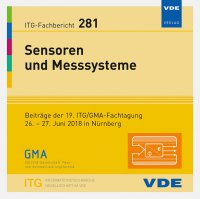Resonant Gas Sensor for Control of Heat Treatment Processes
Konferenz: Sensoren und Messsysteme - 19. ITG/GMA-Fachtagung
26.06.2018 - 27.06.2018 in Nürnberg, Deutschland
Tagungsband: Sensoren und Messsysteme
Seiten: 4Sprache: EnglischTyp: PDF
Persönliche VDE-Mitglieder erhalten auf diesen Artikel 10% Rabatt
Autoren:
Schroeder, Sebastian; Fritze, Holger (Clausthal University of Technology, Institute for Energy Research and Physical Technologies, Am Stollen 19 B, 38640 Goslar, Germany)
Inhalt:
The monitoring of the atmosphere in furnaces during heat treatment processes enables to evaluate the state of the components being processed. This information can be used to control electrically heated industrial furnaces. Depending on the specific heat treatment process, monitoring can be reduced to a manageable number of key gas species. The in-situ measurement of changes in concentration of key gas species in the furnace is performed by resonant sensors that are high-temperature stable and withstand oxidizing and reducing atmospheres. For detection of the key gas species, a sensor system is implemented in which thin metal oxide films are deposited on high temperature stable piezoelectric resonators that are operated in different modes. Interactions of gas atoms/molecules and metal oxide thin films, e. g. adsorption or conductivity changes, impact the resonance frequency of the resonator. Therefore, the property can be used to detect changes in gas concentration. Moreover, the design of the sensor enables to distinguish changes in electrical and mechanical properties of the metal oxides, so that selectivity is increased compared to conventional metal oxide based conductivity sensors [2]. Sensor films applied here are praseodymium-doped cerium oxide (PCO), tin oxide (SnO2) and titanium oxide (TiO2), which are deposited on single crystalline catangasite substrates (Ca3TaGaGa3Si2O14, CTGS). For specific processes of interest, the gases carbon dioxide (CO2), ethane (C2H4) and methane (CH4) have been identified as key gas species which must be detected at temperatures up to 740 °C. The measurements presented here demonstrate the impact of the gas species, concentration, temperature and sensor film geometries on the resonance frequency. For the chosen sensor film geometries and measurement conditions, changes of the resonance frequency are observed for all gas species and temperatures (except for CO2 at 400 °C) at least for one sensor film. The changes are at most about 60 Hz.


